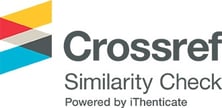Analisis Potensi Pajak Daerah dengan Pendekatan Makro-Mikro di Kota Serang
DOI:
10.33395/owner.v7i3.1420Keywords:
Hotel Tax, Restaurant Tax, Potential, ProjectionAbstract
The development of hotel taxes and restaurant taxes in the city of Serang in the last 5 years has shown a decline. In the last 2 years, namely 2022 and 2021, there has been a negative trend, aka a decrease in the percentage of revenue realization. This is not the same as data for 2020, 2019 and 2018, which shows a positive trend in its realization. The research method used is a quantitative method using secondary data obtained from the offices of BAPENDA, BPKAD and DINKOP UKM. This study uses 2 macro and micro approaches, namely the macro approach using trend analysis linked to the realization of annual taxes, then the micro approach uses secondary data originating from DINKOP UKM on the basis of calculating multiplying the estimated annual turnover of the taxpayer against the effective tax rate. The analytical tool used is trend analysis based on the time series method. The results of the study show that based on the macro approach, the potential for hotel tax and restaurant tax revenues is projected to be very large, this is in line with the results of the micro approach. This shows that the two types of taxes make a sizable contribution to regional tax revenues, provided that the realization can proceed properly so that the amount of local tax revenue collected is in accordance with projections.
Downloads
Plum-X Analityc
References
Abdullah S, Abdul Wahab MR, Abdul Razak A, Hanafi MH. 2022. Property taxation: the encouraging factors for payment among the taxpayers. J. Financ. Manag. Prop. Constr..doi:10.1108/JFMPC-07-2021-0042.
Angel Siti Fatimah A, Aini Rahmah N. 2022. Sistem Informasi, Keuangan, Auditing Dan Perpajakan. J. Compr. Sci. 1(3):419–438.doi:10.36418/jcs.v1i3.66.
Bogdan, Robet, Biklen KS. 2017. Qualitative Research for Education: An Introduction to Theories and Methods, Fifth Edition 5th Edition. New York: Alien and Bacon, Inc.
Estro DS. 2020. Analisis pengaruh penerimaan pajak terhadap pertumbuhan ekonomi indonesia?: pendekatan vektor autoregressive Analisis pengaruh penerimaan pajak terhadap pertumbuhan ekonomi indonesia?: pendekatan vektor autoregressive. Forum Ekon. 22(2):202–209.
Fery I. 2021. Jenis-Jenis Pajak Daerah, Retribusi Daerah Berpengaruh Terhadap Potensi Pendapatan Asli Daerah Era Covid-19. J. Ris. Akunt. dan Bisnis. 7(1):72–83.
Kementrian Keuangan. 2021. Bimtek Peningkatan Kapasitas Pengelola Keuangan Daerah.
Sauyai A, Debby Ch. Rotinsulu KDT. 2022. Analisis Efektivitas Penerimaan Pajak Daerah Dan Retribusi Daerah Terhadap Pendapatan Asli Daerah Kota Sorong Tahun 2014 –2019. J. Berk. Ilm. Efisiensi. 22(1):131–143.
Sinuraya J. 2020. Potensi Pajak Pada Usaha Mikro Kecil Menengah ( UMKM ). J. Ilmu Ekon. Dan Stud. Pembang. 20(2):126–141.doi:10.30596/ekonomikawan.v.
Supriadi A, Ardani GT, Budhi C. 2020. Analisis potensi pajak hotel dan restoran di kota tasikmalaya. J. Ilmu Ekon. 1(22):75–85.
Downloads
Published
How to Cite
Issue
Section
License
Copyright (c) 2023 Muhammad Angga Anggriawan, Kenedi, Hadi Kurniawanto

This work is licensed under a Creative Commons Attribution-NonCommercial 4.0 International License.

















